
Sample Sources
The sources below are those contained in our three curated collections—covering themes of Passover, Gender Roles, and Holocaust Resistance. They represent a fraction of the thousands of sources that will be available when the full site launches in 2024.

Klausen Synagogue (Prague)
The Klausen Synagogue in Prague gets its name from the kloyz (a complex of buildings used for religious purposes, including synagogues) that originally stood on its site, erected in the 1570s. The…
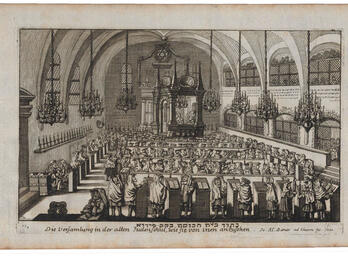
Interior of the Synagogue in Fürth
This print depicting a service in the synagogue in Fürth is from the beginning of the eighteenth century, a period of prosperity for the city’s Jewish community. There were between 350 and 400 Jewish…

Cemetery (Altona)
The Jewish cemetery of Altona is made up of two separate cemeteries, one Sephardic (established in 1611 and later expanded several times) and one Ashkenazic (1616, also later expanded). In the…

Rema Synagogue (Kraków)
The Rema Synagogue, named after the famous rabbi and scholar Moses Isserles (known by the Hebrew acronym “Rema”), was built in 1553 in the city of Kazimierz (today a district of Kraków). It was…
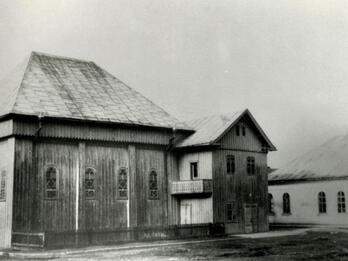
Chodorów Synagogue (Poland)
The wooden synagogue in Chodorów, near Lvov, Poland (now Khodoriv, near Lviv, Ukraine), built in 1652, was destroyed by the Nazis. The austere outside—shown here in an early twentieth-century, black…

Mayse-bukh (Book of Stories)
The Mayse-bukh (Book of Stories), a collection of more than two hundred and fifty stories in Yiddish, was popular among Jews in Western and Eastern Europe from the sixteenth to the nineteenth…
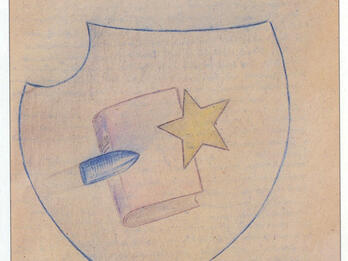
Fireflies in the Dark: The Story of Friedl Dicker-Brandeis and the Children of Terezin
At the end of the workday, the children were allowed to visit their parents and relatives for one hour. Sometimes there were longer visits on Saturday afternoons and Sundays. But there were no visits…

The Dead Class
In The Dead Class, the most famous of Kantor’s theater pieces from the 1970s, the main characters of the play are elderly men (who are to be understood as being dead), who return to their school desks…
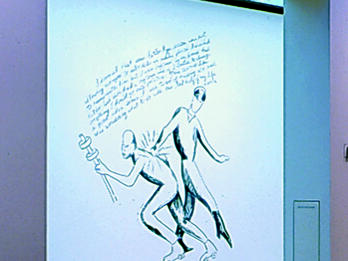
Hitler Dream
Many of Borofsky’s works are based on autobiographical narratives or his dreams about people such as movie stars, his family, other artists, and historical figures, including Hitler. The text in this…

Untitled
In 1981, Anastasi (who is not Jewish) began working on a series of works featuring the word “Jew,” because of its “charged” positive and negative valences. Untitled (jew) is composed of four canvases…
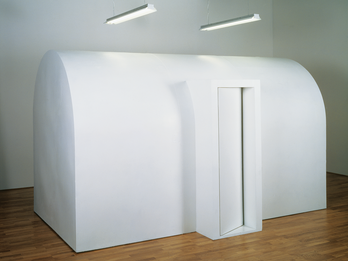
Cell No. 1
The “Cellules,” or Cells, were six tiny all-white living spaces that Absalon planned to install in Tokyo, Paris, Zurich, New York, Tel Aviv, and Frankfurt. He intended to live in them, so they were…
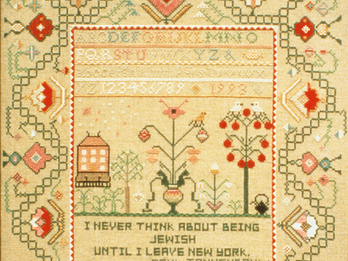
A Postcolonial Kinderhood
Reichek used needlework to comment on and subvert the embroidered sampler, an eighteenth- and nineteenth-century woman’s craft, transforming it into a feminist exploration of the exposure and…

